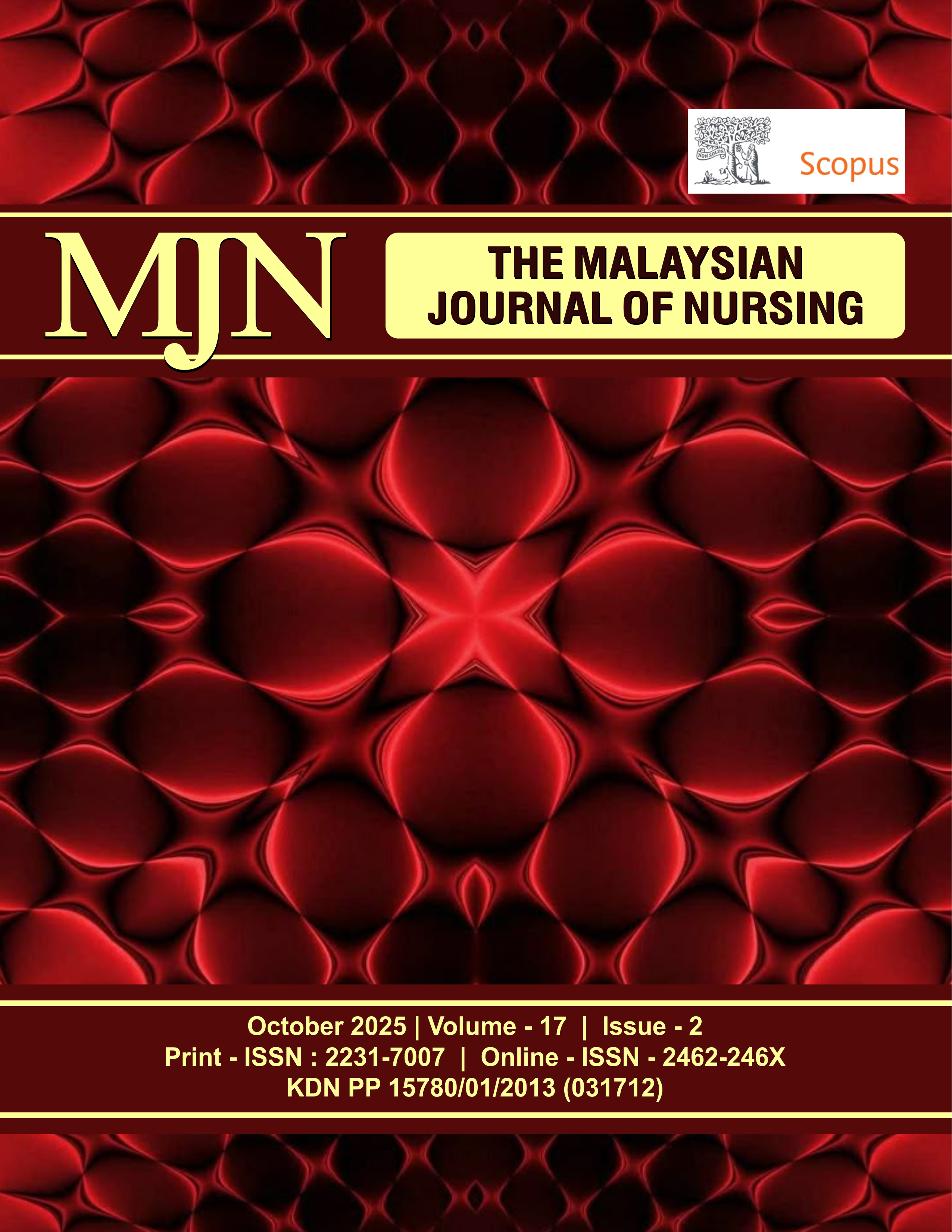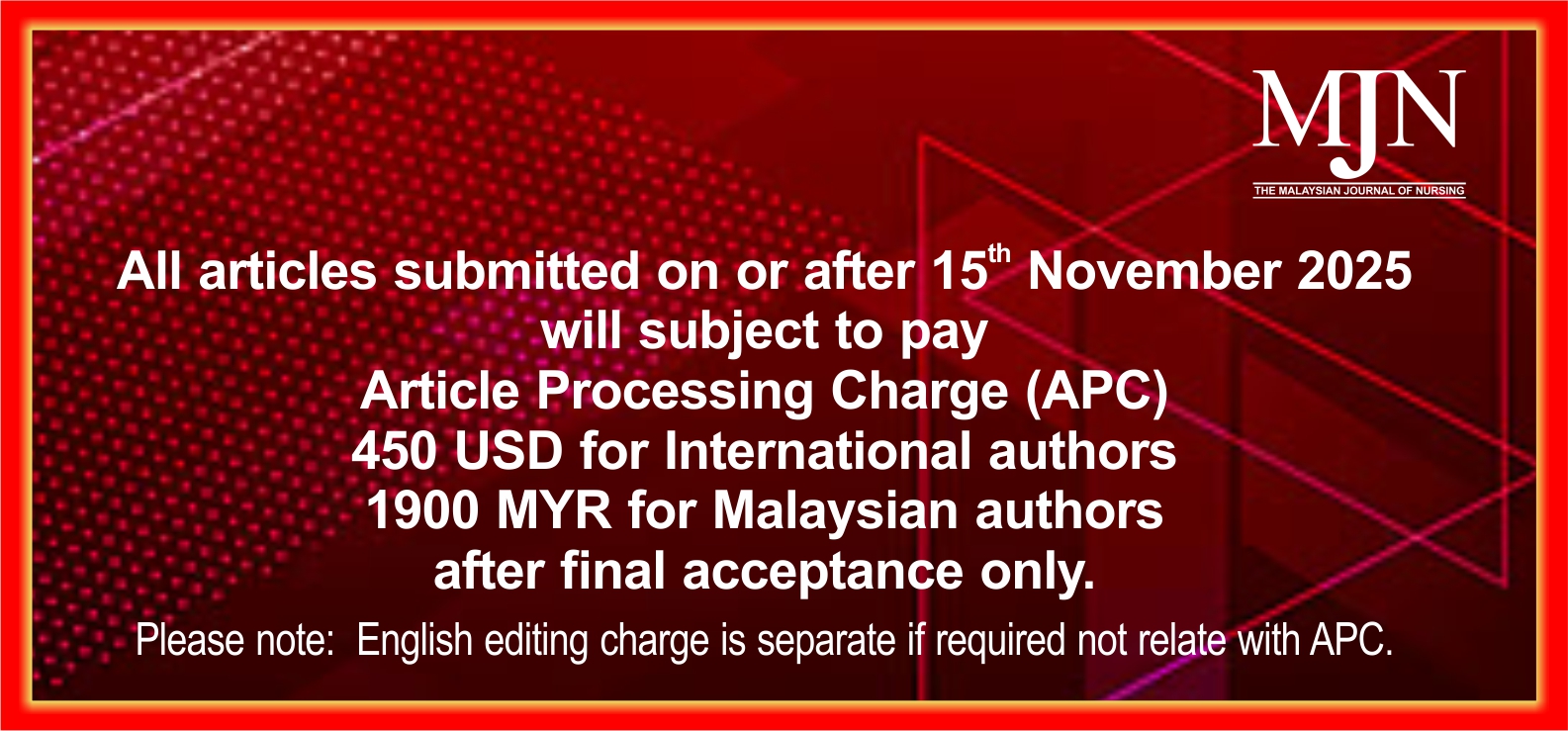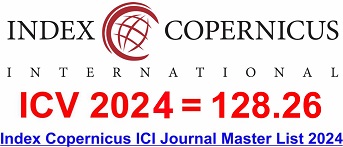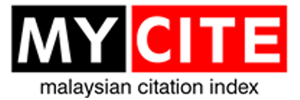Effectiveness of a High Protein Diet on the Nutritional Status of Pulmonary Tuberculosis Patients at Pandak I Public Health Centre
DOI:
https://doi.org/10.31674/mjn.2025.v17i02.020Abstract
Background: Pulmonary tuberculosis is greatly influenced by low nutritional status, which degrades the immune system and causes a slower recovery. Nurses play an important role in improving the nutritional status of pulmonary tuberculosis patients through a high-protein diet. Objectives: This study assessed the effectiveness of providing nutrition to pulmonary tuberculosis patients. Methods: Quantitative quasi-experimental research by comparing pre and post-tests. The respondents are all patients with pulmonary tuberculosis at Pandak I Public Health Centre in Bantul Regency. The respondents were randomly divided into two groups, as the intervention group has 14 respondents and the control group has 7 respondents. Results: Based on the statistical test of the difference in BMI pre and post-intervention, the p-value = 0.082 (> 0.05) and post intervention, the p-value = 0.396 (> 0.05). Mid-Upper Arm Circumference (MUAC) pre- and post-intervention, the p-value = 0.000 (< 0.05) and post-intervention, the p-value = 0.002 (< 0.05). The edema status pre- and post-intervention, the p-value = 0.165 (> 0.05), post-intervention p-value = 0.002 (< 0.05). This shows that there is a statistically significant difference in MUAC between pre- and post-intervention, between MUAC in TB patients who have received the intervention and those who have not, and between edema status in tuberculosis patients who have received the intervention and those who have not. Conclusion: Increased MUAC was the only variable that had the most influence in this study compared to BMI and edema. MUAC revealed significant advancements in both populations, accentuating its responsiveness as a gauge of nutritional recovery in patients diagnosed with pulmonary tuberculosis.
Keywords:
Nutrition, Pulmonary Tuberculosis, High ProteinDownloads
References
Adminwarta, (2024, August 22). Pemkot Yogya targetkan 2026 Zero TB [Yogyakarta City Government targets Zero TB by 2026]. Portal Berita Pemerintah Kota Yogyakarta. https://warta.jogjakota.go.id/detail/index/35256
Arlinta, D. (2024, February 8). Estimasi kasus TBC di Indonesia naik jadi lebih dari 1 juta kasus [Estimated TB cases in Indonesia have increased to more than 1 million cases]. kompas.id. https://www.kompas.id/baca/english/2024/02/07/en-estimasi-kasus-tbc-di-indonesia-naik-jadi-lebih-dari-1-juta-kasus
Balkhy, H. (2025). World TB Day 2025. World Health Organization. https://www.emro.who.int/world-tb-day/2025/index.html
Bemena, B. M. S., Totoshina, A., Feno, D. R., & Rakotoarivelo, R. A. (2025). New branch and definitions against emerging infectious diseases. Academia Medicine and Health, 2(1). https://doi.org/10.20935/acadmed7470
Bernstein, A. M., Golubic, M., & Roizen, M. F. (2015). The impact of protein on chronic disease risk should be considered in studies of weight loss. The American Journal of Clinical Nutrition, 101(5), 1097–1098. https://doi.org/10.3945/ajcn.114.105189
Bray, G. A., Smith, S. R., Xie, H., Rood, J., Martin, C. K., Most, M., Brock, C., Mancuso, S., & Redman, L. M. (2012). Effect of dietary protein content on weight gain, energy expenditure, and body composition during overeating: A randomized controlled trial. JAMA, 307(1), 47-55. https://doi.org/10.1001/jama.2011.1918
Carbone, J. W., & Pasiakos, S. M. (2019). Dietary protein and muscle mass: Translating science to application and health benefit. Nutrients, 11(5), 1136. https://doi.org/10.3390/nu11051136
Chandarasekaran, P., Saravanan, N., Bethunaickan, R., & Tripathy, S. (2017). Malnutrition: Modulator of immune responses in tuberculosis. Frontiers in Immunology, 8, 1316. https://doi.org/10.3389/fimmu.2017.01316
Dinas Kesehatan Kabupaten Bantul (2023, November 24). Dinkes Bantul bersama Sinergi Sehat Indonesia terus berupaya tekan angka penularan TBC. Kabupaten Bantul. [The Bantul Health Office, together with Sinergi Sehat Indonesia, continues its efforts to reduce the number of TB infections. Bantul Regency]. https://bantulkab.go.id/berita/detail/6179/dinkes-bantul-bersama-sinergi-sehat-indonesia-terus-berupaya-tekan-angka-penularan-tuberculosisc.html
Fahdhienie, F., Mudatsir, M., Abidin, T. F., & Nurjannah, N. (2024). Risk factors of pulmonary tuberculosis in Indonesia: A case-control study in a high disease prevalence region. Narra J, 4(2), e943. https://doi.org/10.52225/narra.v4i2.943
Fatsecret. (2025). Kalori dalam Kalbe Peptisol dan Fakta Gizi [Calories in Kalbe Peptisol and Nutrition Facts]. Fatsecret. https://www.fatsecret.co.id/kalori-gizi/kalbe/peptisol/1-porsi
Feleke, B. E., Feleke, T. E., & Biadglegne, F. (2019). Nutritional status of tuberculosis patients, a comparative cross-sectional study. BMC Pulmonary Medicine, 19(1), 182. https://doi.org/10.1186/s12890-019-0953-0
Garcia-Basteiro, A. L., Hurtado, J. C., Castillo, P., Fernandes, F., Navarro, M., Lovane, L., Casas, I., Quintó, L., Jordao, D., Ismail, M. R., Lorenzoni, C., Carrilho, C., Sanz, A., Rakislova, N., Mira, A., Alvarez-Martínez, M. J., Cossa, A., Cobelens, F., Mandomando, I., Vila, J., Martínez, M. J. (2019). Unmasking the hidden tuberculosis mortality burden in a large post mortem study in Maputo Central Hospital, Mozambique. The European Respiratory Journal, 54(3), 1900312. https://doi.org/10.1183/13993003.00312-2019
Gumelar, W. R., & Tangpukdee, J. (2022). The effect of nutrition education based on local foods on mothers’ knowledge and anthropometry of malnutrition children aged 6 to 21 months. The Malaysian Journal of Nursing, 14(01), 53–58. https://doi.org/10.31674/mjn.2022.v14i01.008
Gurung, L. M., Bhatt, L. D., Karmacharya, I., & Yadav, D. K. (2018). Dietary practice and nutritional status of tuberculosis patients in Pokhara: a cross sectional study. Frontiers in Nutrition, 5,63. https://doi.org/10.3389/fnut.2018.00063
Kabthymer, R., Yacob, Terefe., Tenkolu, Girma. (2020). Determinants of nutritional edema among under-five children with severe acute malnutrition admitted to health facilities at Gedeo zone: unmatched case–control study. Nutrition and Dietary Supplement Jornal, 1(2), 49—56. https://doi.org/10.2147/NDS.S238403
Kesari, A., & Noel, J. Y. (2023, April 10). Nutritional assessment. StatPearls - NCBI Bookshelf. https://www.ncbi.nlm.nih.gov/books/NBK580496/
Kumar, R., & Paswan, B. (2021). Changes in socio-economic inequality in nutritional status among children in EAG states, India. Public Health Nutrition, 24(6), 1304–1317. https://doi.org/10.1017/S1368980021000343
Kusumawardhani, N. E., & Hadiani, N. N. F. (2025). Albumin levels pre therapy and clinicopathological parameters of lung cancer patients. Majalah Biomorfologi, 35(1), 29–39. https://doi.org/10.20473/mbiom.v35i1.2025.29-39
Lent-Schochet, D., & Jialal, I. (2023, May 1). Physiology, edema. StatPearls - NCBI Bookshelf.
Ma’rufi, I., Ali, K., Jati, S. K., Sukmawati, A., Ardiansyah, K., & Ningtyias, F. W. (2020). Improvement of nutritional status among tuberculosis patients by Channa striata supplementation: A true experimental study in Indonesia. BioMed Research International, 2020, 1–9. https://doi.org/10.1155/2020/7491702
MacNeil, A., Glaziou, P., Sismanidis, C., Maloney, S., & Floyd, K. (2019). Global epidemiology of tuberculosis and progress toward achieving global targets — 2017. MMWR Morbidity and Mortality Weekly Report, 68(11), 263–266. https://doi.org/10.155 85/mmwr.mm6811a3
Mohamed-Hussein, A. A. R., Salama, S. A., Khalil, M. A., & Eid, S. A. (2016). Malnutrition in tuberculosis: Value of fat-free mass and creatinine-height index. The Egyptian Journal of Bronchology, 10(1), 58–63. https://doi.org/10.4103/1687-8426.176790
Mondoni, M., Centanni, S., & Sotgiu, G. (2020). New perspectives on difficult-to-treat tuberculosis based on old therapeutic approaches. International Journal of Infectious Diseases, 92, S91–S99. https://doi.org/10.1016/j.ijid.2020.02.039
Moon, J., & Koh, G. (2020). Clinical evidence and mechanisms of high-protein diet-induced weight loss. Journal of Obesity & Metabolic Syndrome, 29(3), 166–173. https://doi.org/10.7570/jomes20028
Newdiet (2025, April 22). Contraindications of the high-protein diet Newdiet | Newdiet. https://www.newdiet.ch/en/about-method/contraindications-of-the-high-protein-diet-newdiet/
Ockenga, J., Fuhse, K., Chatterjee, S., Malykh, R., Rippin, H., Pirlich, M., Yedilbayeva, A., Wickramasinghe, K., Barazzoni, R. (2023). Tuberculosis and malnutrition: The European perspective. Clinical Nutrition, 42(4), 486–492. https://doi.org/10.1016/j.clnu.2023.01.016
Ortona, E., Pierdominici, M., & Rider, V. (2019). Editorial: Sex hormones and gender differences in immune responses. Frontiers in Immunology, 10, 1076. https://doi.org/10.3389/fimmu.2019.01076
Sagala, A. B. M., Rekawati, E., & Nursasi, A. Y. (2024). The effect of nutritional management in the nutritional status of patients with pulmonary tuberculosis: A systematic review literature. Indonesian Journal of Global Health Research, 6(3), 1161-1172. https://doi.org/10.37287/ijghr.v6i3.3085
Scallan, J., Huxley, V., & Korthuis, R. J. (2010). Pathophysiology of edema formation. In Capillary fluid exchange: Regulation, functions, and pathology (Chapter 4). Morgan & Claypool Life Sciences. https://www.ncbi.nlm.nih.gov/books/NBK53445/
Thompson, A. D., Shea, M. J., & Howlett, J. G. (2024, August)). Edema. MSD Manual, Professional Version. https://www.msdmanuals.com/professional/cardiovascular-disorders/symptoms-of-cardiovascular-disorders/edema
Published
How to Cite
Issue
Section
License
Copyright (c) 2025 The Malaysian Journal of Nursing (MJN)

This work is licensed under a Creative Commons Attribution-NonCommercial-NoDerivatives 4.0 International License.



































